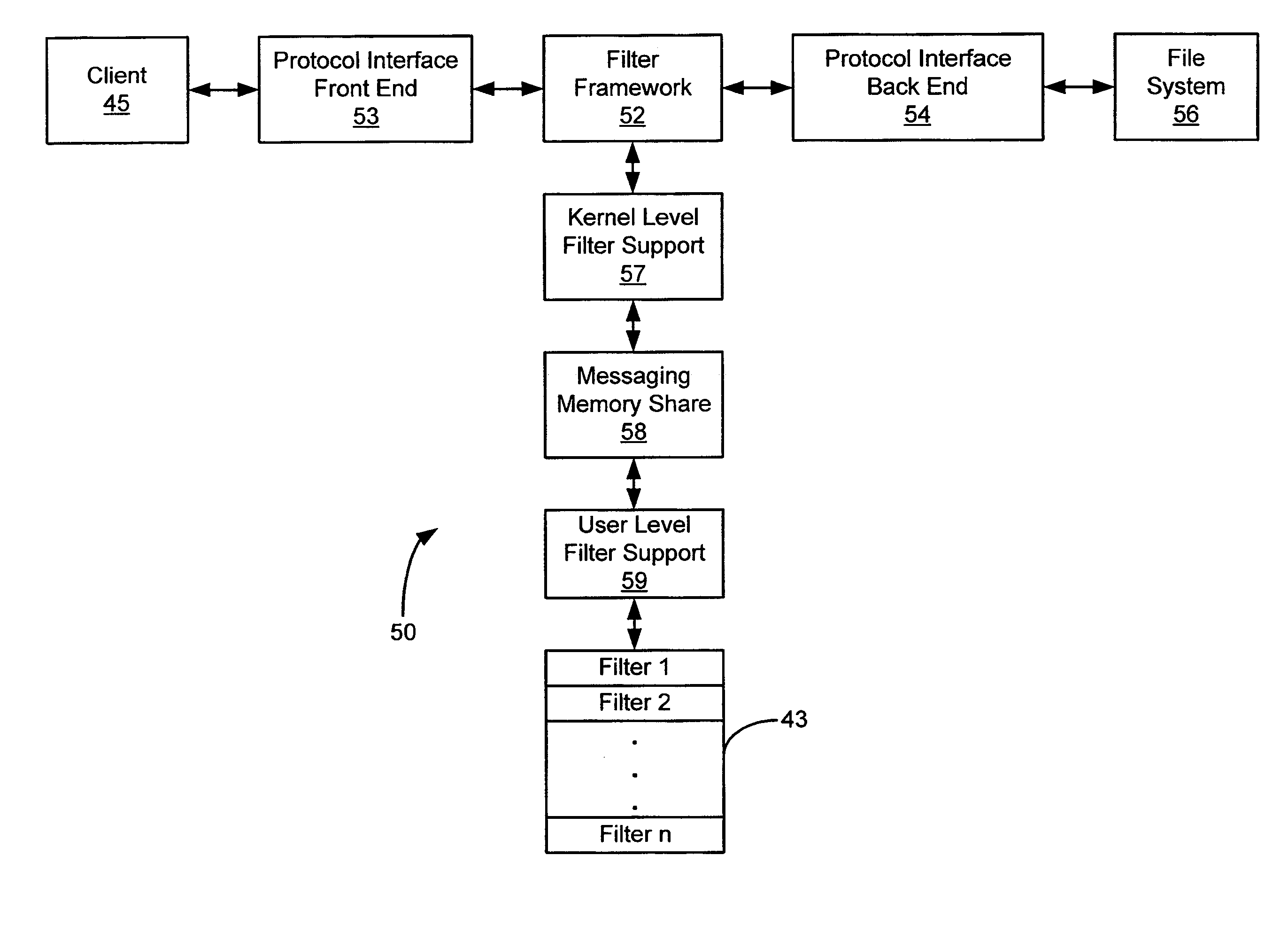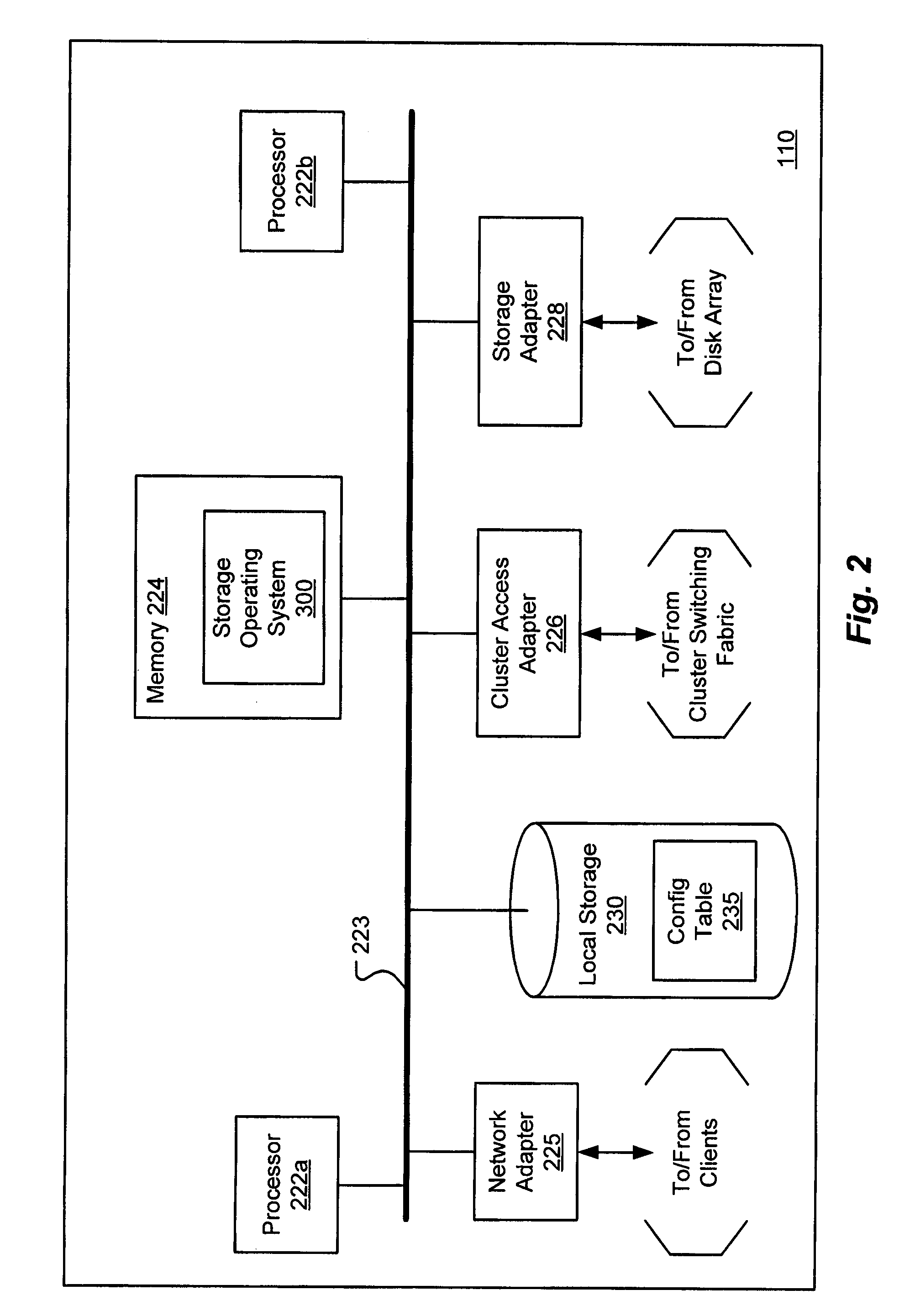System and method for filtering information in a data storage system
a data storage and information technology, applied in the field of data storage and retrieval system, can solve the problems of affecting the control flow of i/o operations, affecting the accuracy of block data, and affecting the control of filter sequence, so as to achieve the effect of reducing the number of filter sequences
- Summary
- Abstract
- Description
- Claims
- Application Information
AI Technical Summary
Benefits of technology
Problems solved by technology
Method used
Image
Examples
Embodiment Construction
[0051]The concepts of the file system filter in accordance with the present disclosure derive support from a file system architecture with sophisticated mechanisms for storing, maintaining and retrieving data. A discussion of the filing system, or filer, in which an embodiment of the file system filter architecture is implemented follows below.
[0052]FIG. 1 is a diagram illustrating a storage system cluster with a storage system architecture 100 having a plurality of nodes 110. Each node 110 is generally organized with a network module 120 and a disk module 130. Network module 120 includes functionality that enables node 110 to connect to clients 170 over a connection system 180, while disk modules 130 connect to one or more storage devices, such as disks 140 or a disk array 150. Nodes 110 are interconnected by a switching fabric 160 which may be embodied as a Gigabit Ethernet switch, for example. It should be noted that while there is shown an equal number of network and disk module...
PUM
 Login to View More
Login to View More Abstract
Description
Claims
Application Information
 Login to View More
Login to View More - R&D
- Intellectual Property
- Life Sciences
- Materials
- Tech Scout
- Unparalleled Data Quality
- Higher Quality Content
- 60% Fewer Hallucinations
Browse by: Latest US Patents, China's latest patents, Technical Efficacy Thesaurus, Application Domain, Technology Topic, Popular Technical Reports.
© 2025 PatSnap. All rights reserved.Legal|Privacy policy|Modern Slavery Act Transparency Statement|Sitemap|About US| Contact US: help@patsnap.com



